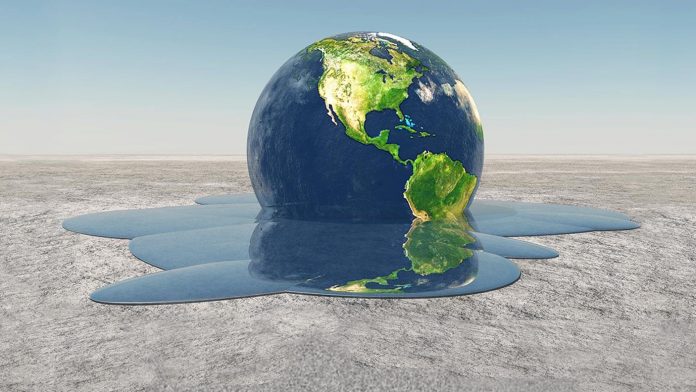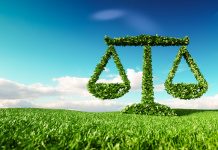This article is written by Chandrasmita Priyadarshini, from Kiit School Of Law, Bhubaneshwar. This article covers how rivers are conserved in India and what measures are taken by the Government of India for the same.
Table of Contents
Introduction
Rivers are said to be the means of survival for our civilization. Rivers are considered to be a powerful and precious national asset of India. The conservation of the river ecosystem is non-transferable now. A reasonable legal protection mechanism working hand in hand with the existing statutes must be instituted for the protection of rivers. The restoration and conservation of rivers must be of the highest priority for sustaining humanity and ecology for the present and future generations. River conservation is a planned activity connected with various habitat features and outlines how to conserve all the rivers spread across India.
Causes of pollution in river bodies
By humans
Waste from households particularly sewage water from houses that get discharged into rivers or other various water bodies. These wastes are mainly in form of wastage, garbage from personal usage, or liquid wastes and wastes from sewage. These wastes are mainly for domestic use. Along with dumping wastes into water bodies from industries, or by dumping ground by local people. These dumps usually contain plastic, aluminium, glass which affects rivers and is harmful to aquatic life as these wastes don’t easily degrade inside water.
By Industries
Industrial wastes are usually composed of very harmful substances like lead, asbestos, petrochemicals, and traces of mercury, which are hazardous for aquatic life and humans and the quality of water. Various industries are now being constructed near rivers just to dump waste easily, which is moderated by a commission. These also include wastes from plants, textile factories, fertilizer mills, paper mills, hospital wastes, etc who generate liquid and solid wastes into rivers which contaminates them.
Wastes due to religious practices
Indians have a high religious factor as cleaning themselves in rivers is said to wash away their sins, dumping dead bodies in the river, dumping religious figures of idols after the worship is done for the period are harmful to river bodies.
Due to acid rain
Even though acid rain may seem like a natural problem, it is wise to note that acid rains are caused due to acidic particles in the contaminated air. These particles in the atmosphere get mixed with water vapor and result in acid rain which harms the rivers. This results in thermal pollution which increases the temperature of water bodies and gets altered due to these man-made activities. These toxic products when released are harmful to the native plant as well as the animals including aquatic animals.
Impact of river pollution
- Marine life is getting affected due to water pollution which is increasing day by day, hence, disturbing the ecosystem of the river.
- This pollution affects the aquatic life as dams are now being built over the various rivers which act as reservoirs of water which is hazardous as all animals find it difficult to keep up to it.
- Not only aquatic life, but humans are also affected as in the end humans drink that polluted water, use it for daily chores and make themselves vulnerable to various diseases i.e.water borne diseases like typhoid, jaundice, cholera, etc which might be life-threatening also. Humans are also exposed to chemically treated water for their daily chores like cleaning, washing, etc which increases the chances of spreading infectious diseases.
- A brittle ecosystem can get ruined due to such pollution. If the water keeps getting polluted then the ecosystem can collapse and some species are already extinct or about to be which needs to be taken care of.
- The chemicals released into the water bodies get settled at the bottom which forms a thick layer over the river bed the bacteria existing in the water feed on them resulting in a decrease in oxygen which harms the aquatic life present in rivers.
- This also causes an unfavorable impact on the food chain of animals existing in the ecosystem. If aquatic life tends to accommodate as per the polluted water, the marine species may have toxins and pollutants in their body. When humans tend to feed on fishes, shellfishes, or other aquatic species, they end up consuming the toxins and pollutants too
Actions are taken by the Government for the conservation of various rivers
Recently, the Central Government used the Environment Protection Act, 1986 and the Environment Protection Rules, 1986 to notify eco-sensitive zones around Protected Areas. In an eco-sensitive zone, all activities are divided into three categories – prohibited, regulated, or permitted. It is a model that can be employed for river conservation as well. These measures are necessary for river conservation as they serve an immense utility for controlling humans from indulging in activities that are harmful to river conservation. These activities by humans must be categorized as prohibited or regulated categories. For monitoring this, a committee must be constructed by the local officials and some experts who can regulate pollution on river bodies. Also, as per Section 19 of the Environment Act, 1986 these officials can take action if anyone pollutes such rivers which ensure practices legal protection for the same. As due to ecosystem, rivers are spread across national parks and sanctuaries which depend on water sources, so legal protection is given to this under Section 29 and 35(6) of the Wildlife Protection Act, 1972 which ensures no destruction of wildlife, which includes aquatic animals also.
With this, the Government of India has introduced the National Water Mission as an action plan for the damage control that has already occurred. This was approved on 6th April 2011 by the Union Cabinet for enforcement of such act and commission. The main aim behind National Water Mission is to conserve water, minimize waste dumping in water bodies, ensure equal distribution of such missions all over India for water resource development and management. The goals established by the mission were:
- Comprehensive water database in public domain and assessment of the impact of climate change on water resource.
- To promote human well-being by taking required state action to conserve water, enhancement, and conservation.
- To focus on areas that are extreme in water pollution and areas that are exploited.
- Water usage in an efficient manner.
- To promote basin-level integrated water resources management.
The principle of sustainable development must be followed to achieve such goals. Finances were allowed for the implementation of the National Water Mission by the Central scheme of the Ministry of Water Resources later approved by the Ministry of Finance. Unfortunately, river conservation programs will be effective only if the ecological, economic, technological, and social dimensions of the problem are seen comprehensively. Various lifestyle changes must be made for such changes to be implemented. Reservoirs or dams must be made to supply water to cities and this wastewater from houses must be treated in sewage before it flows back to rivers which have less chance to destroy it.
Therefore, the government must take steps to stop chemicals from being released into the rivers as these are also the source of drinking water which affects aquatic life and humans also. Hence, there is a need for comprehensive river basin pollution control programs. State and Central governments are responsible for monitoring and implementation of such laws and commissions. Though many states prefer to encourage indiscriminate urbanization, industrialization, and agricultural development disregarding the health implications of water pollution for people living downstream.
Water (Prevention and Control of Pollution) Act, 1974
This Act represented India’s first attempts to comprehensively deal with environmental issues. This act aims to prevent, control, and abate water pollution, Maintenance or restoration of river bodies which are major sources of water. Also, this act confers power to the established bodies such as the central board and the state board established by the central government and state government respectively to control pollution of these water bodies. The governing bodies are:
- Central Board – Central Pollution Control Board (CPCB)
- State Board – State Pollution Control Board (SPCB)
According to Section 2(e) of the Act, “pollution” means any contamination of water or alteration of the physical, chemical, and biological properties of water or disposing of any sewage waste in the water that is likely to cause nuisance or renders such water to be harmful to public health or safety or domestic, industrial or other legitimate use or harmful to the life and health of the animals and aquatic plants.
Water (Prevention and Control of Pollution) Cess Act, 1977
As waste from industries is the primary source of water pollution, this waste is usually dumped into rivers which causes a high level of water pollution. This Act provides for a levy and collection of a cess on water consumed or polluted by the industries and local authorities. The objective of this Act is to augment the resources of the central and the state boards for prevention and control of water pollution. On this Act, The Water (Prevention and Control of Pollution) Cess Rules were formulated in 1978 for the defining standards and indications for the kind of and location of meters that every consumer of water is required to install.
Right to a healthy environment as guaranteed under Constitution of India
Though earlier, the right to a healthy environment was vital, it was not considered a fundamental right. However, Article 21 of the Indian Constitution gives every person the right to life and personal liberty. Article 21 says that “No person shall be deprived of his life or personal liberty except according to a procedure established by law.” This Article imposes a duty on the State to protect the life and liberty of the people. The concept of the right to life has been broadened through various judicial pronouncements. While deciding cases relating to the environment, the judiciary has pronounced the right to a clean environment as fundamental to life and upheld it as a fundamental right. Hence, clean water and river pollution would be covered under such an Article as the right to life. This was further cleared in various case laws as mentioned below:
Subhash Kumar v. State of Bihar (1991)
In this case, the petitioner filed public interest litigation against two iron and steel companies, because they allegedly created health risks to the public by dumping waste from their factories into the nearby Bokaro river. The petitioner also claimed that the State Pollution Control Board ailed to take appropriate measures to prevent this pollution. The Supreme Court observed that the right to life is a fundamental right under Article 21 of the Constitution and it includes the right of enjoyment of pollution-free water and air for full enjoyment of life. The court recognized the right to a wholesome environment as a part of the fundamental right to life. This case also indicated that the municipalities and concerned govt. authorities could no longer rest. They may be compelled to take measures to improve the environment.
Vellore Citizens Welfare Forum v. Union of India AIR 1996 SC 2715
In this case, the petitioner, Vellore Citizens Welfare Forum filed a Public Interest Litigation under Article 32 of the Constitution. The petition was filed against the large-scale pollution caused to River Palar due to the discharge of untreated effluents by the tanneries and other industries in the State of Tamil Nadu. The water of River Palar was the main source of drinking and bathing water for the surrounding people. Further, the Tamil Nadu Agricultural University Research Centre, Vellore found that nearly 35,000 hectares of agricultural land have become either totally or partially unfit for cultivation. This is a landmark case in which the Supreme Court critically analyzed the relationship between environment and development.
National River Conservation Directorate
The National river conservative directorate is the functioning body under the Ministry of Jal Shakti which is used to implement the protection of rivers and lakes across India Under the National river conservation plan and National lake conservation plan by permission from the respective State governments. The objectives of such plans are:
- To improve the quality of rivers and be considered a major freshwater source of the country.
- To implement pollution abatement schemes and to designate the ethical use of water.
- Assess the concentration of pollutants in identified rivers such as plastics, metals, chemicals, etc.
- To identify policies to conserve zones in priority and specify an action plan for it.
- Identify, prioritize and enhance the capacity of the regional institutions/organizations for long-term involvement in river conservation.
A total of 34 rivers has been covered under such scheme, these are:-Adyar, Betwa, Bhadra, Brahmani, Cauvery, Cooum, Chambal, Damodar, Dhipu & Dhansiri, Ganga, Godavari, Gomati, Khan, Krishna, Kshipra, Mahanadi, Mandovi, Mahananda, Musi, Narmada, Pennar, Pamba, Rani Chu, Sabarmati, Satluj, Subarnarekha, Tapti, Tunga, Tungabadra. Tamrabarani, Vaigai, Vennar, Wainganga, Yamuna.
The National river conservation plan focuses on how to treat sewage water from flowing into the river, also treating it and setting up sewage treatment plans for treating such raw sewage water, to construct sanitation toilets that could prevent defecation on river banks. This project will enhance the awareness and understanding among people for the conservation of rivers, protect aquatic life, extend anthropogenic influence, hydrology regime and concentrate key pollutants in rivers. This project will help in the conservation of rivers and pave the path for the systematic occurrence of the protection of rivers across India.
Conclusion
Rivers are large water bodies in the human-dominated world that are threatened due to various factors which necessitate policies for the conservation of rivers. The current scenario of rivers in India is degrading due to a lack of Governmental policies, legislative tools, and no conclusion regarding a holistic policy. Though river conservation is considered a joint effort by all humans as individuals and not just government regulators but with a regulatory body, this is more effective. The governance of such policies must be strengthened through consultation, empowerment, and engagement by all. If all these riverine ecosystems degrade in our country, that is a national concern to be focused on. The revival of such rivers can be made with the awareness of river management, experience, and conservation knowledge. This shall also improve the water scrutiny, security, and environment.
References
1. http://jalshakti-dowr.gov.in/government-initiatives
3. https://www.cabdirect.org/cabdirect/abstract/2011306192
https://t.me/joinchat/J_0YrBa4IBSHdpuTfQO_sA
Follow us on Instagram and subscribe to our YouTube channel for more amazing legal content.
 Serato DJ Crack 2025Serato DJ PRO Crack
Serato DJ Crack 2025Serato DJ PRO Crack











 Allow notifications
Allow notifications



